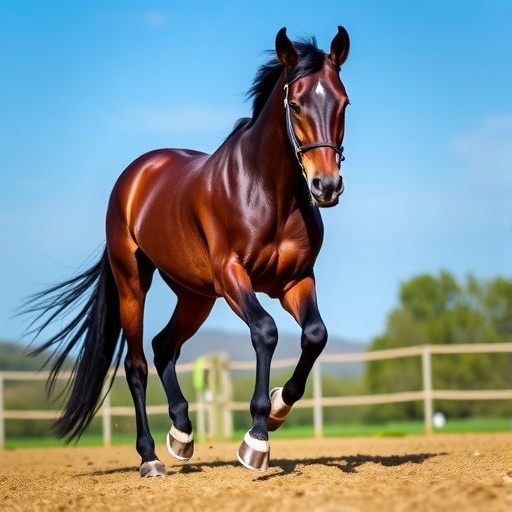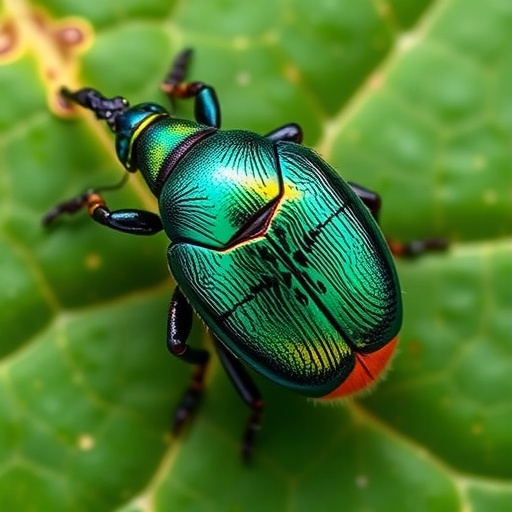
In a groundbreaking study, researchers unveiled the chromosome-level genome of the hybrid fish species, Cyprinus rubrofuscus â crossed with Sinocyclocheilus grahami â. This pioneering work opens a new chapter in aquaculture and fish genetics, offering vital insights into the genomic foundation of economical traits in hybrids. The comprehensive study presents not just the high-quality parental haplotype genomes but also discusses the implications for enhancing economically viable traits in these species. By thoroughly analyzing these genomes, the research demonstrates the monumental potential of hybrid species in sustainable aquaculture.
The emergence of hybrid species in aquaculture has transformed our understanding of fish biology and commerce. The hybridization of Cyprinus rubrofuscus and Sinocyclocheilus grahami has generated excitement due to the combination of desirable traits from both parents. Cyprinus rubrofuscus is known for its resilience and growth rate, while Sinocyclocheilus grahami presents unique physiological characteristics that contribute to flavor and texture. By investigating these hybrids, scientists are uncovering the genetic mechanisms that dictate such important traits that are crucial for aquaculture.
The key methodology in this study involved constructing a chromosome-level reference genome through advanced sequencing technologies. This technique provides the highest level of precision in genome assembly, revealing the intricate architecture of DNA in these fish. The authors carefully analyzed the assemblage of the genomes, which allows them to map traits directly to specific regions of the DNA. This detailed level of insight paves the way for future genetic experiments aimed at further enhancing traits important to aquaculture, such as disease resistance and growth efficiency.
Additionally, the research underscores the significance of parental haplotypes in understanding the hybrid genome. By deriving high-quality haplotype genomes, the scientists demonstrated how these genetic frameworks can inform breeding programs. The study provides correlations between specific genetic markers and the hybrid’s economic traits, which is a monumental step toward genetically-informed breeding strategies. The authors meticulously elaborate on how these haplotypes can serve as genetic beacons for researchers and aquaculturists aiming to produce superior strains of hybrid fish.
Moreover, the importance of this research extends beyond just hybrid fish; it addresses broader questions regarding biodiversity and genetic preservation. As humanity faces myriad environmental challenges, including climate change and overfishing, understanding the genetic diversity within aquatic species is vital. The detailed insights from this study contribute to practices that can help manage fish populations while enhancing their economic viability. By fostering both growth and sustainability, we can look forward to a future where aquaculture is not merely a tradition but an evolutionary advance in food security.
In examining the hybrid’s economic traits, the researchers focused on critical aspects such as growth rate, feed efficiency, and disease resistance. These traits are paramount for successful aquaculture, and the study provides quantitative data supporting the advantages of utilizing hybrid species. Insights from the genome enable targeted selection for these traits, thus helping aquaculturists produce more robust fish that can thrive in varying conditions. The potential for developing fish with optimized growth rates and low feed conversion ratios is particularly promising in the context of feeding a growing global population.
A key aspect that the authors emphasize relates to the potential for genetic editing technologies, such as CRISPR, to enhance these economically relevant traits further. With the foundational work provided by this genome assembly, scientists can use such technologies to introduce desirable genetic variations directly into aquaculture strains. Genetic modification could facilitate rapid advancements in fish breeding, producing strains that are not only more resilient but are also optimized for higher quality in terms of flavor and texture.
The ecological implications of such advancements cannot be understated. Sustainable aquaculture practices that leverage genetic information hold the potential to reduce pressure on wild fish stocks. By creating hybrids with enhanced growth traits, aquaculture can provide a sustainable source of fish protein that meets the demands of our growing human population. The combination of science and sustainability illustrated in this study is a forward-thinking approach to solving global food insecurity.
Furthermore, the research draws attention to the ethical considerations surrounding hybridization and genetic manipulation. The authors carefully navigate these conversations, presenting a balanced perspective on the potential benefits and risks. While hybridization offers advancements in food production, it also raises concerns about the impacts on native species and ecosystems. The ongoing dialogue among scientists, policymakers, and the public is crucial to ensuring that such technologies are developed responsibly and sustainably.
Through the comprehensive presentation of their findings, the researchers encapsulate the essence of modern fish genetics and aquaculture. They illuminate the path forward for addressing the challenges faced by the fishing industry, combining traditional practices with innovative science. Their work acts as a catalyst for future investigations into not just Cyprinus rubrofuscus and Sinocyclocheilus grahami, but other hybrid species as well, showcasing a fertile ground for advancements in aquaculture research.
In summary, the chromosome-level genome assembly of the Cyprinus rubrofuscus and Sinocyclocheilus grahami hybrid represents a significant stride in the field of fish genetics. It situates itself at the crossroads of ecological sustainability and economic advancement, providing valuable insights that will shape the future of aquaculture. As we look toward a future requiring innovative solutions to complex global challenges, research such as this reminds us that the advancements in our understanding of genetics could very well be the key to sustainable practices in food production. This groundbreaking work serves not only as a reference point for future studies but as an essential contribution to the ongoing dialogue about sustainable aquaculture practices worldwide.
By leveraging cutting-edge genomic technologies and embracing the principles of hybrid vigor, researchers are pioneering the next generation of aquaculture. The resultant hybrids may soon play a prominent role in tropical water fisheries, revolutionizing the industry. For aquaculturists, scientists, and conservationists alike, this study solidifies the union between genetic research and practical applications in enhancing fish cultivation, undeniably marking a bold step forward in our quest for sustainability and efficiency in aquaculture.
Subject of Research: Hybridization in aquaculture focusing on Cyprinus rubrofuscus à Sinocyclocheilus grahami.
Article Title: Chromosome-level genome of Cyprinus rubrofuscus â Ã Sinocyclocheilus grahami â provides high-quality parental haplotype genomes and insights into hybrid economic traits enhancement.
Article References:
Yin, Y., Zhang, Y., Wu, A. et al. Chromosome-level genome of Cyprinus rubrofuscus â Ã Sinocyclocheilus grahami â provides high-quality parental haplotype genomes and insights into hybrid economic traits enhancement.
BMC Genomics 26, 739 (2025). https://doi.org/10.1186/s12864-025-11929-8
Image Credits: AI Generated
DOI:
Keywords: Hybrid fish, genome sequencing, aquaculture, Cyprinus rubrofuscus, Sinocyclocheilus grahami, genomic studies, economic traits, sustainable practices, genetic editing technologies, CRISPR, biodiversity, ecological sustainability.
Tags: advanced DNA sequencing technologiesaquaculture economic traitsaquaculture industry advancementschromosome-level genome sequencingCyprinus rubrofuscus geneticseconomically viable hybrid speciesfish biology research breakthroughsgenetic mechanisms of fish traitshybrid fish genomehybrid species in fish farmingSinocyclocheilus grahami hybridizationsustainable aquaculture innovations




